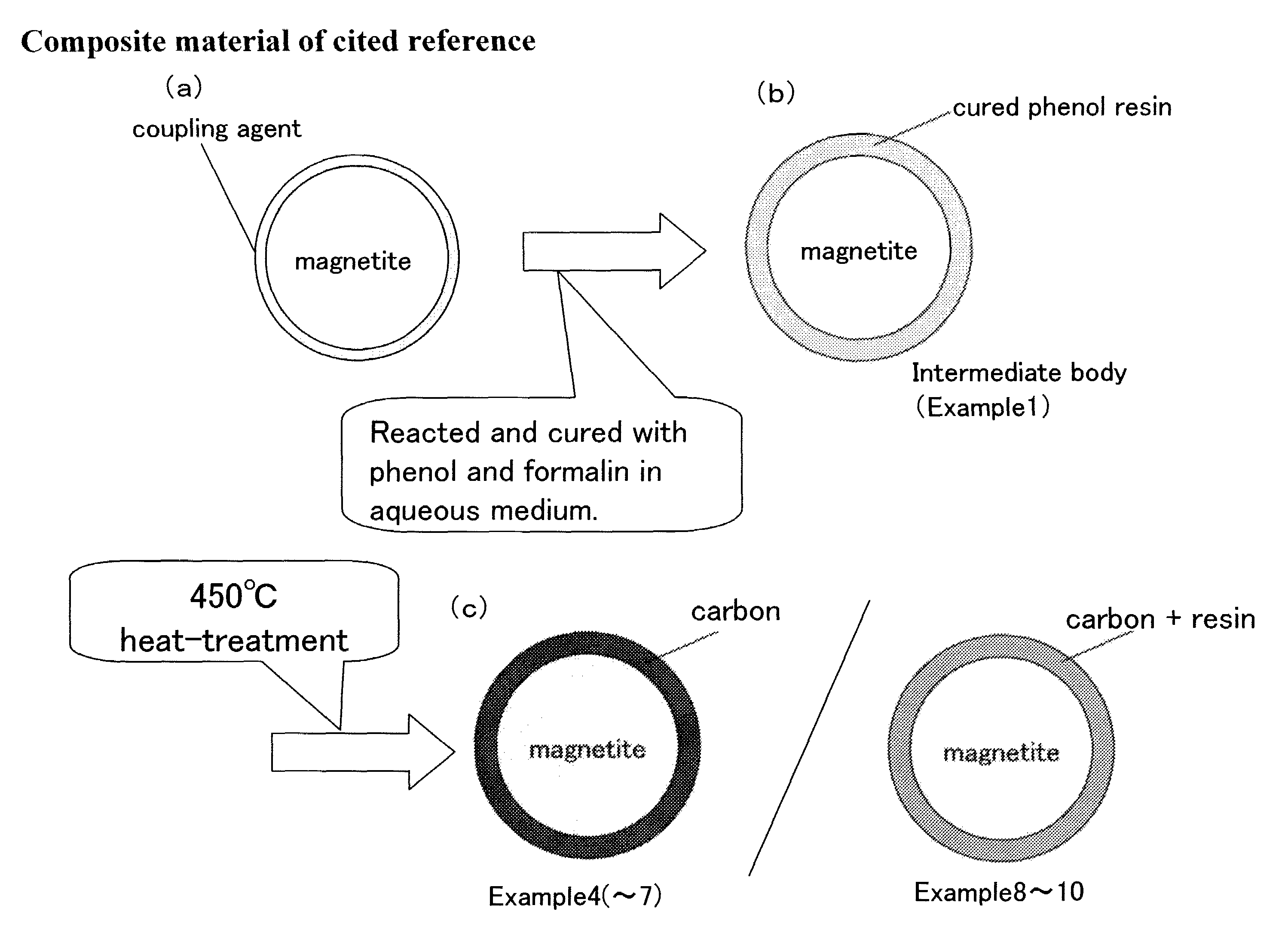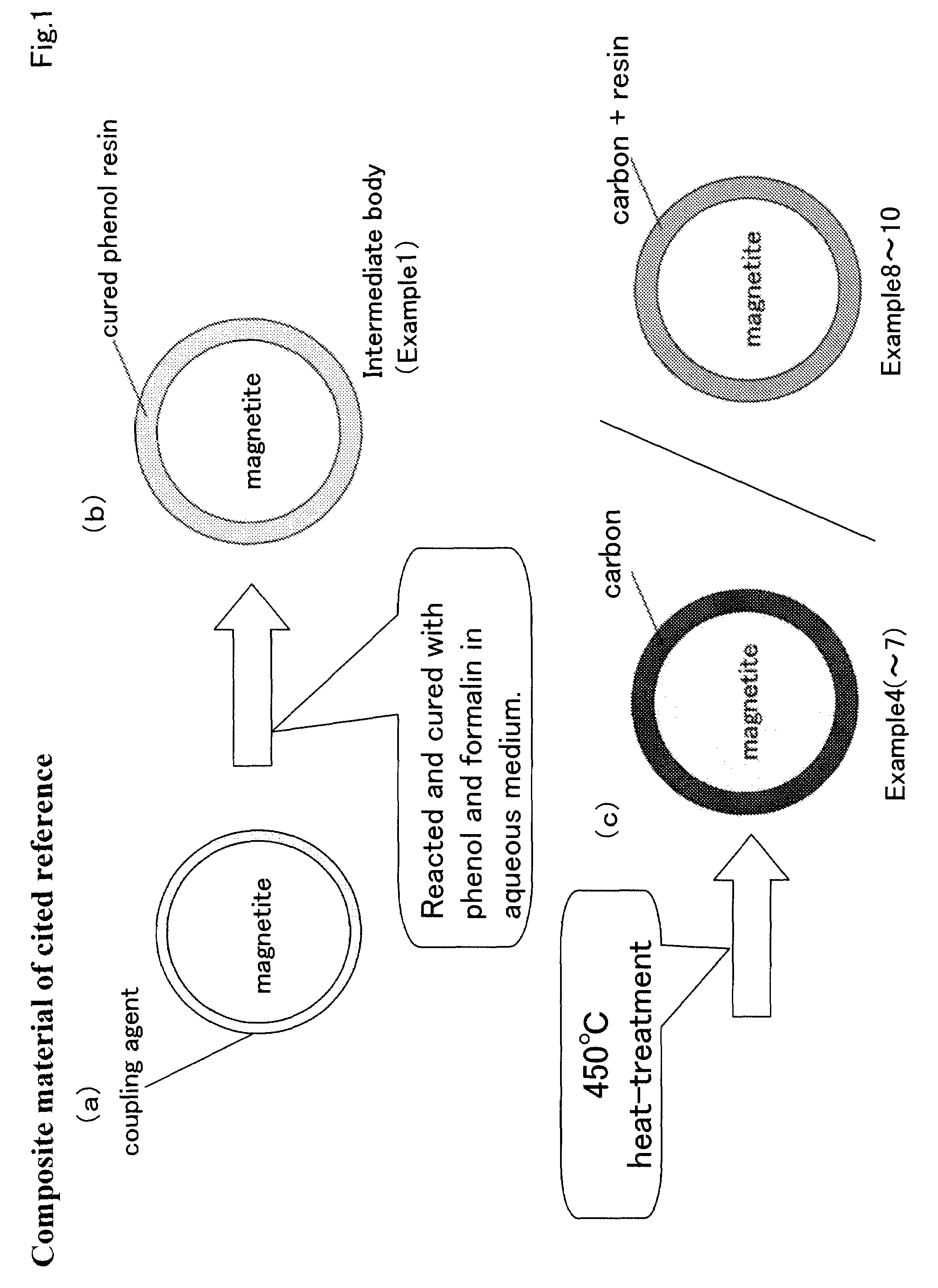Method for manufacturing spherical ceramic powder
a technology of ceramic powder and spherical shape, which is applied in the field of manufacturing ceramic powder, ceramic powder and composite materials, can solve the problems of inability to secure the dispersant and filler properties required for resin materials under this method, and the techniques explained above entail some difficulties, and achieve excellent dispersant and filler properties against resin
- Summary
- Abstract
- Description
- Claims
- Application Information
AI Technical Summary
Benefits of technology
Problems solved by technology
Method used
Image
Examples
embodiment examples
[0052]The present invention will be described below with reference to more specific examples.
embodiment example 1
[0053]Slurry was prepared by mixing barium oxide (BaO) powder, titanium oxide (TiO2) powder, neodymium (Nd2O3) powder and manganese oxide (MnO) powder weighed at a weight ratio of 13.8:54.7:31.4:0.1, adding water and mixing them for 12 hours with a ball mill (hereafter referred to as No. 1 slurry). Prior to the mixing, however, a dispersant (A-30SL manufactured by Toa Gosei Co.) was added at a weight percentage of 1% to the powder.
[0054]No. 1 slurry was dried and granulized with a spray-type drier. While there are no special restrictions for the spray and drying conditions, it is desirable to set the conditions so that the particle size of the granular powder is less than about 200 μm.
[0055]Sintered composite oxide was obtained by sintering the granular powder thus obtained for one hour at 1,250° C. Then, slurry containing powder particles with a mean particle size of about 0.5 μm was prepared by adding water to the sintered oxide and then dispersant agent (A-30SL manufactured by To...
embodiment example 2
[0061]For Embodiment Example 2, powder was obtained under the same conditions as Embodiment Example 1 except for the fact that the pulverizing hours with the ball mill was extended to 96 hours in order to obtain the No. 2 slurry. Then, disc shaped samples were obtained.
[0062]The mean particle size of the powder comprising the No. 2 slurry following 96 hours of pulverization was about 0. 1 μm. Also, the mean particle size of granular powder obtained from using the spay drying method on the No. 2 slurry was about 4.5 μm. Also, the powder after sintering had a mean particle size of about 3.5 μm and a sphericity of 0.94. Moreover, it was verified that, when the particle size of the powder applied in the spray drying method was made smaller, the particle size of the granular powder would become smaller compared to Embodiment Example 1,
[0063]Table 2 shows the dielectric ratio and quality coefficient (Q) of Embodiment Example 2 measured in the same way as Embodiment Example 1.
PUM
| Property | Measurement | Unit |
|---|---|---|
| mean particle size | aaaaa | aaaaa |
| sphericity | aaaaa | aaaaa |
| mean particle size | aaaaa | aaaaa |
Abstract
Description
Claims
Application Information
 Login to View More
Login to View More - R&D
- Intellectual Property
- Life Sciences
- Materials
- Tech Scout
- Unparalleled Data Quality
- Higher Quality Content
- 60% Fewer Hallucinations
Browse by: Latest US Patents, China's latest patents, Technical Efficacy Thesaurus, Application Domain, Technology Topic, Popular Technical Reports.
© 2025 PatSnap. All rights reserved.Legal|Privacy policy|Modern Slavery Act Transparency Statement|Sitemap|About US| Contact US: help@patsnap.com



